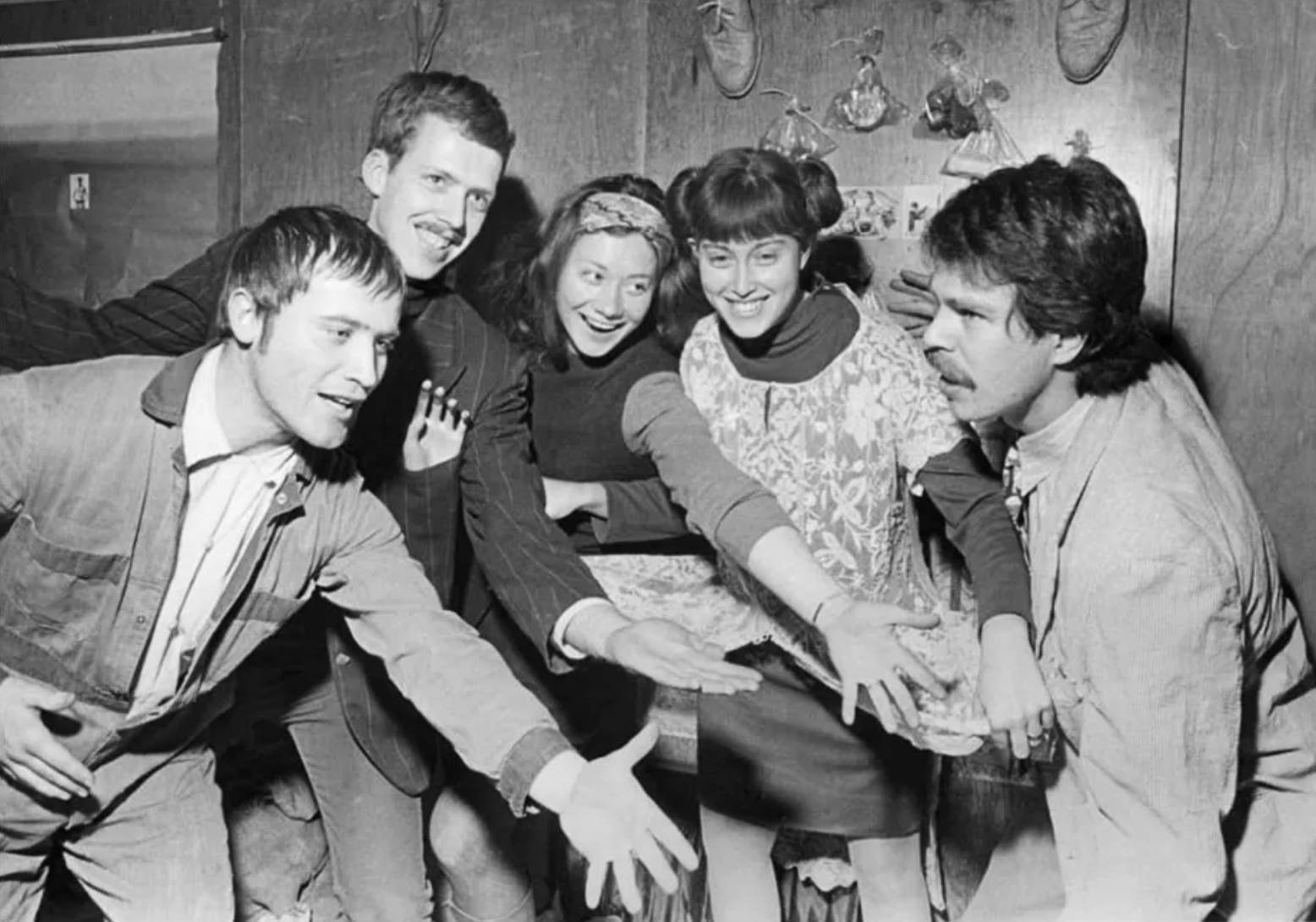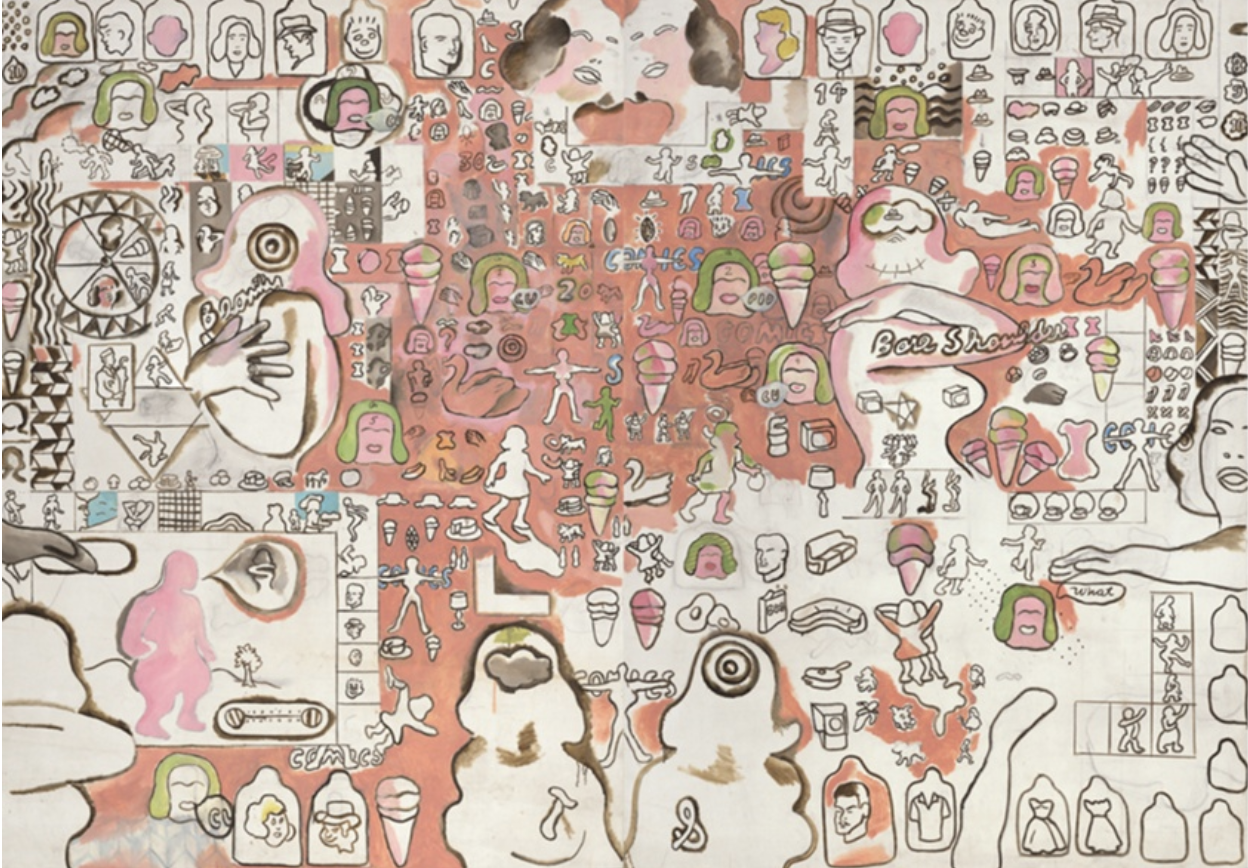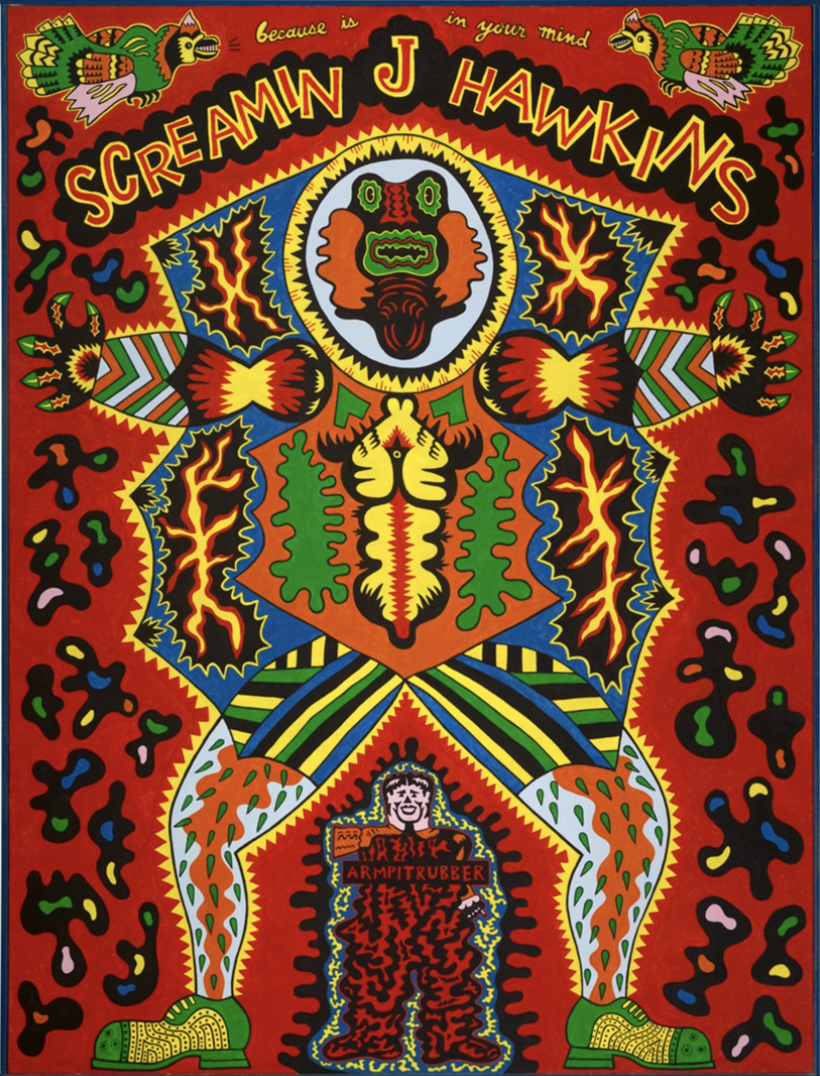Meet the Auction Artists: Suellen Rocca and Karl Wirsum

Starting from the left, Karl Wirsum, Art Green, Gladys Nilsson, Suellen Rocca, and Jim Nutt (1967). Credit: Charles Krejcsi. Image courtesy of the Chicago Reader.
Starting from the left, Karl Wirsum, Art Green, Gladys Nilsson, Suellen Rocca, and Jim Nutt (1967). Credit: Charles Krejcsi. Image courtesy of the Chicago Reader.
by Nadya Kelly (MA 2023)
Meet the Auction artists! Suellen Rocca and Karl Wirsum are just two of scores of School of the Art Institute of Chicago alums and faculty members who donated work to the SAIC Art Auction, with proceeds benefiting student scholarships.
The 1960s—a time characterized by tense racial and gender relations and the escalation of the Vietnam War—left many disempowered youth searching for radical change. Two of the original Chicago Imagists, Suellen Rocca (BFA 1964, HON 2016) and Karl Wirsum (BFA 1961, HON 2016), channeled this revolutionary spirit with their fearless approach to artmaking.
Rocca and Wirsum’s time at the School of the Art Institute of Chicago (SAIC) served as a launching pad for the Chicago Imagists movement. In school, Wirsum and Rocca made connections with fellow students Jim Nutt (BFA 1965), Gladys Nilsson (BFA 1962, HON 2016), Art Green (BFA 1965, HON 2016), and Jim Falconer (BFA 1965, HON 2016), who went on to become the exhibition group the Hairy Who.
After graduating from SAIC, the group sought to make an official entrance into the art world, and they used their first show at the Hyde Park Art Center as a chance to make their bold debut. Their 1966 group show featured 62 artworks with colorful palettes, distorted imagery, and multiple puns and wordplay, both in their artwork and in their titles. Their exhibition name, the Hairy Who, was coined after discovering that Wirsum was the only member who had never heard of local radio critic Harry Bouras. (Harry who?) Following their show’s success, the group completed two additional shows at the Hyde Park Art Center and three more shows in San Francisco, Washington D.C, and New York.

Bare Shouldered Beauty and the Pink Creature, Suellen Rocca. Image courtesy of the Art Institute of Chicago.
Bare Shouldered Beauty and the Pink Creature, Suellen Rocca. Image courtesy of the Art Institute of Chicago.
Though the members of the Hairy Who exhibited their work as a group, its members primarily focused on developing their own artwork as individuals. Rocca’s paintings often explored popular culture through elements of repetition and iconography. For example, Rocca’s Bare Shouldered Beauty and the Pink Creature features cartoonish faces, ice cream cones, dresses, and more symbols to create a style of picture-writing which has often been compared to hieroglyphics.

Screamin’ Jay Hawkins, Karl Wirusm. Image courtesy of the Art Institute of Chicago
Screamin’ Jay Hawkins, Karl Wirusm. Image courtesy of the Art Institute of Chicago
Wirsum used bold colors to depict highly-stylized characters. Wirsum’s Screamin’ Jay Hawkins, influenced by the blues singer-songwriter Jay Hawkins, is one of many works that centered his love of blues and jazz through his vivid, high-energy painting.
Rocca passed away in 2020, and Wirsum passed away in 2021. Still, the influence of the Hairy Who continues to shine in Chicago today. Their work lives on as a source of inspiration for countless people who seek to make art that is true to themselves regardless of any art world trends.
Auction bidding opens on Artsy on November 1. Check out more info about the SAIC Art Auction–including bidding, events, and other artists who donated work–at our auction site. ■
{{[http://www.saic.edu/news/alums]ALUMS}} {{[http://www.saic.edu/news/artconnectsus]ART CONNECTS US}}
